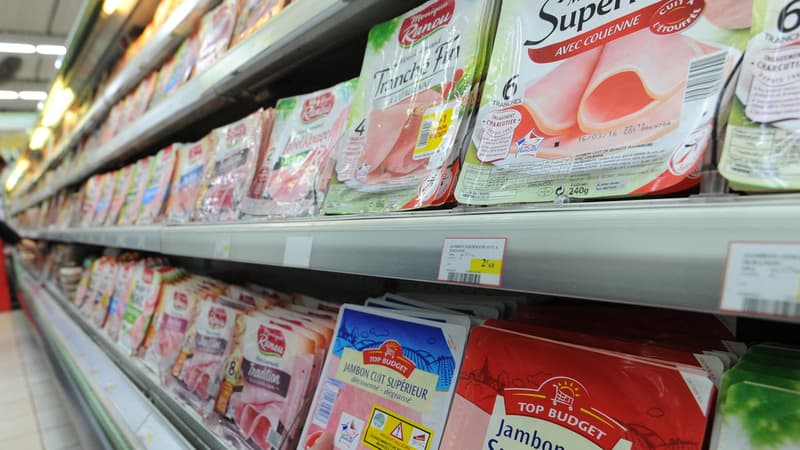The Government has presented this Monday an action plan that provides for “immediate reductions in nitrates” of around 20% within a month for consumer delicatessen products, in particular cooked hams, lardons, rillettes or sausages dry. This decision follows a publication by the health agency (Anses) in July, which confirms a link between cancer risk and exposure to nitrate additives.
At the forefront in the fight against these additives, The consumer defense association Foodwatch and the Cancer League have denounced Tuesday “the reluctance of the government, which is satisfied above all with reductions based on voluntary commitments from manufacturers.”
Confirmed Cancer Risks
Nitrites and nitrates exist naturally in our environment, but they can also be intentionally added to food, in the form of food additives, particularly with a preservative function. Result, “our diet exposes us daily to nitrites and nitrates,” ANSES wrote in July.
Suspected for years of having a harmful effect on health, the health agency confirmed this summer “the existence of an association between the risk of colorectal cancer and exposure to nitrites and/or nitrates.” And “the greater the exposure to these compounds, the greater the risk of colorectal cancer in the population as well.”
Other cancer risks are also suspected, “but the available data do not allow, to date, to conclude the existence of a causal link,” specifies the health agency.
In January, high nitrite intake was also associated with an increased risk of developing type 2 diabetes.
In this sense, the health agency has been calling for a reduction in the use of nitro-additives in marketed products for several months, particularly sausages. Pour limiter are exposure aux nitrates et aux nitrites, the health agency also recommends limiting to 150 grams per week and par personne la consommation de charcuterie (soit l’equivalent de treis tranches de jambon environ) et à 500 grams per week of food Red.
Why not ban them entirely?
On the side of butchers, we advocate for health safety in the use of these additives. Historically, this profession used these components to extend the shelf life of products and prevent the growth of pathogenic bacteria that cause botulism in particular, a serious neurological condition that has been largely forgotten due to the advancement of health.
“I have no other solutions to guarantee health security,” Joël Mauvigney, president of the national confederation of butchers-catering, assures BFMTV, “there are still cases of botulism in France and he does not forgive there.” However, this number is extremely low, as four botulism outbreaks were reported in France in 2017 with a total of five patients, Public Health France reports in a 2019 report on the subject.
Camille Dorioz, Foodwatch campaign director, highlights the existence of nitrite-free delicatessen already on our shelves, which shows that it is possible to do without this additive.
“Parma ham, 20 years old without nitrite, without bacteriological problem”, he adds, “we have known how to do it for a long time, the question is, are we prepared to do it?”.
“Why not go further when we have something carcinogenic, related to a cancer risk in our food?” he asks on BFMTV, adding that “there is no good dosage for something carcinogenic in our food, it doesn’t exist.”
According to the League Against Cancer, “by banning these additives, 4,000 cases of cancer a year linked to the consumption of sausages could be avoided.”
In its plan, in addition to the immediate reduction of 20%, the Government speaks of short-term reductions (6-12 months) of 25 to more than 30% in other products, such as “sausages, cooked sausages, pâtés, rillettes, andouilles and andouillettes”. The total elimination of the use of this additive is expected within a period of 5 years, “in the majority of delicatessen products”, if substitute solutions are found.
Source: BFM TV


